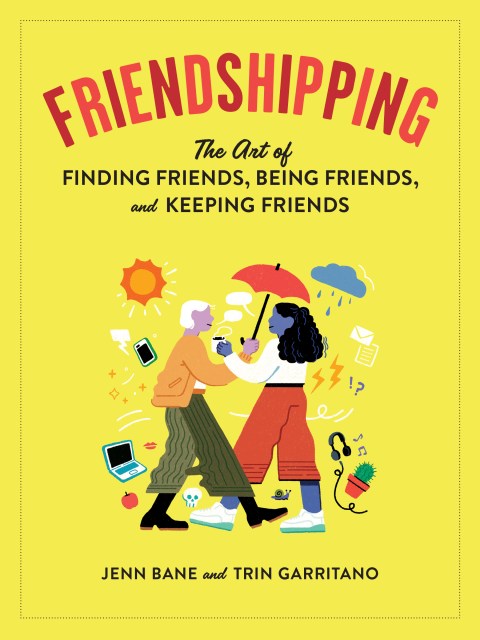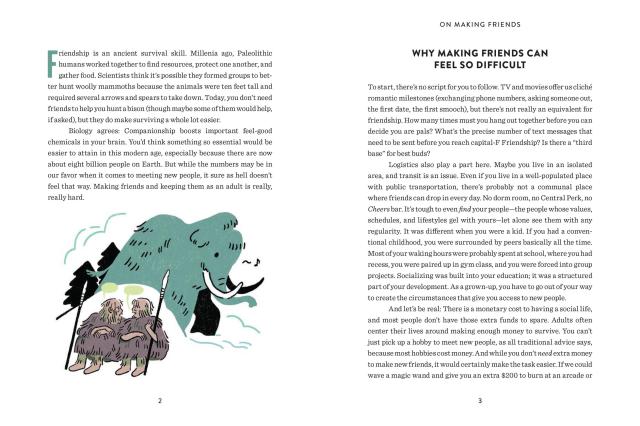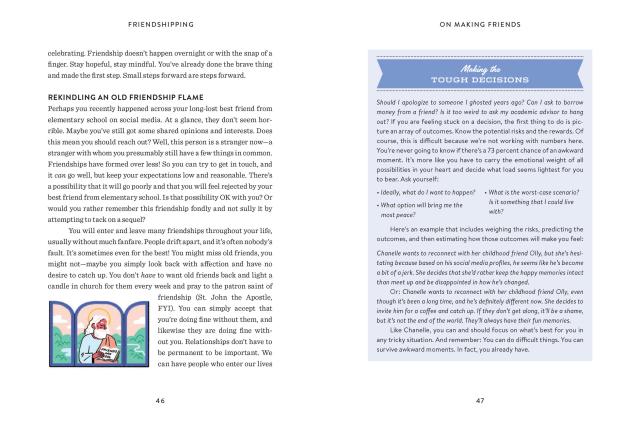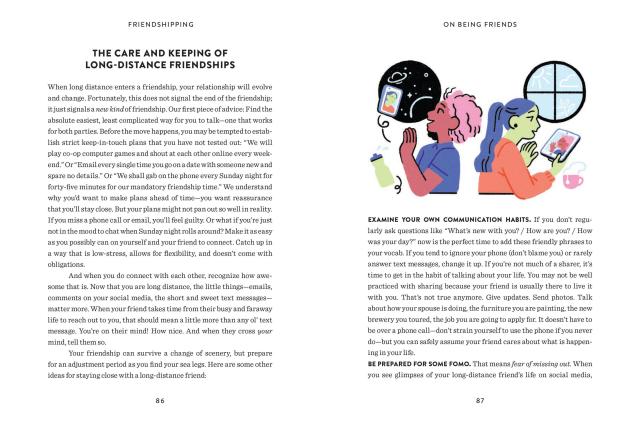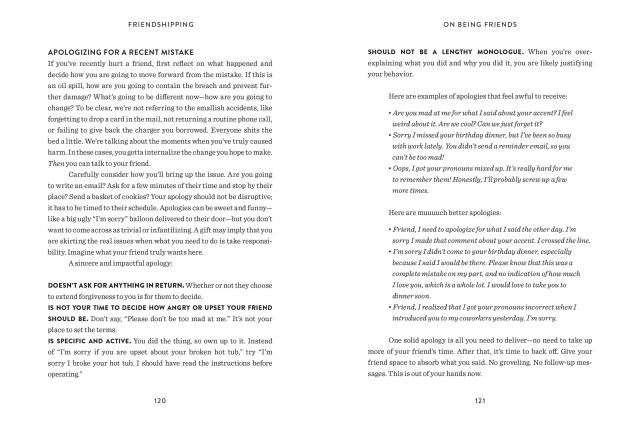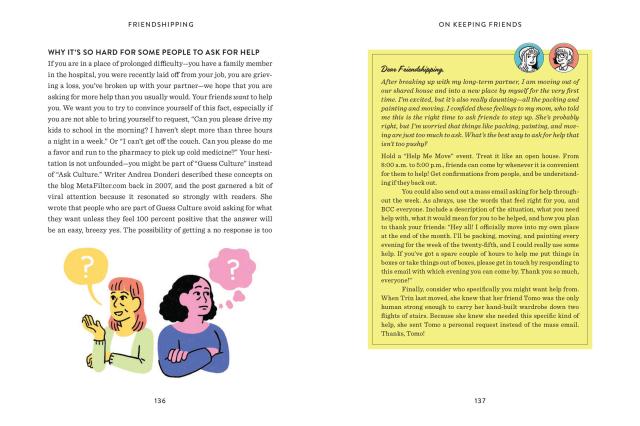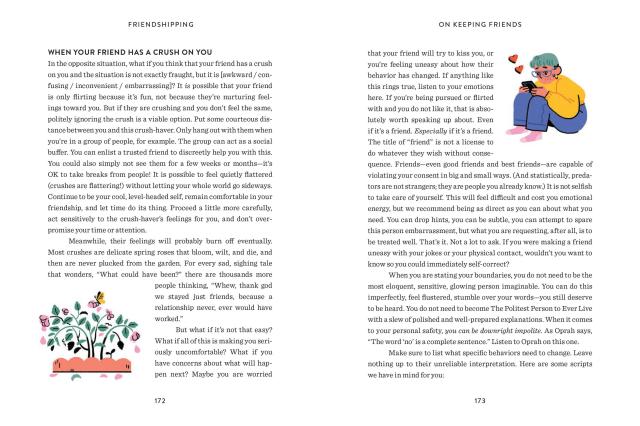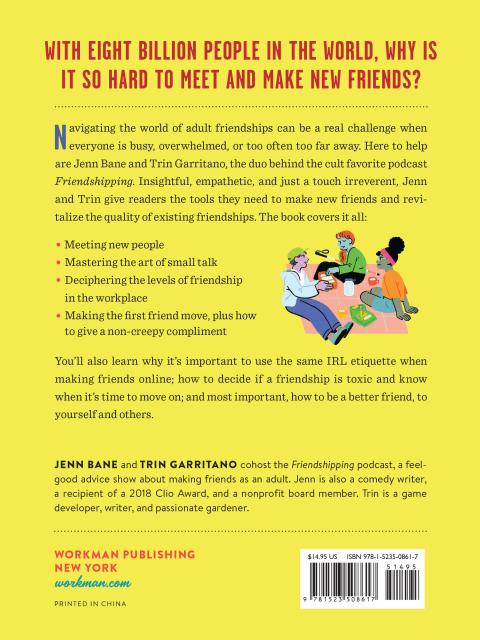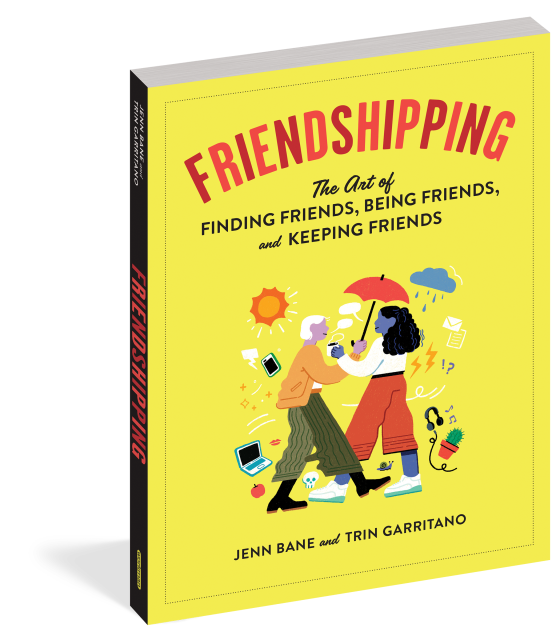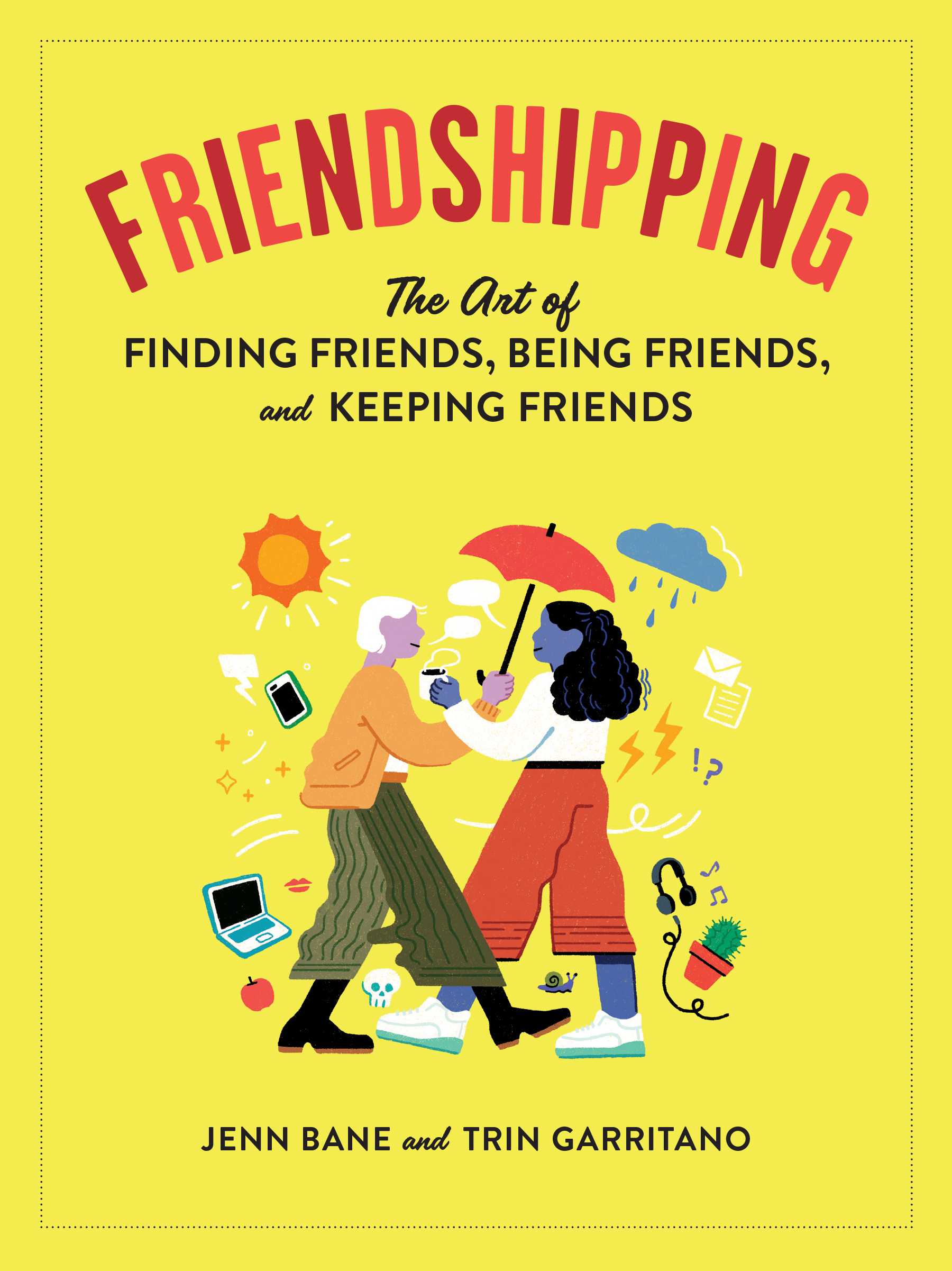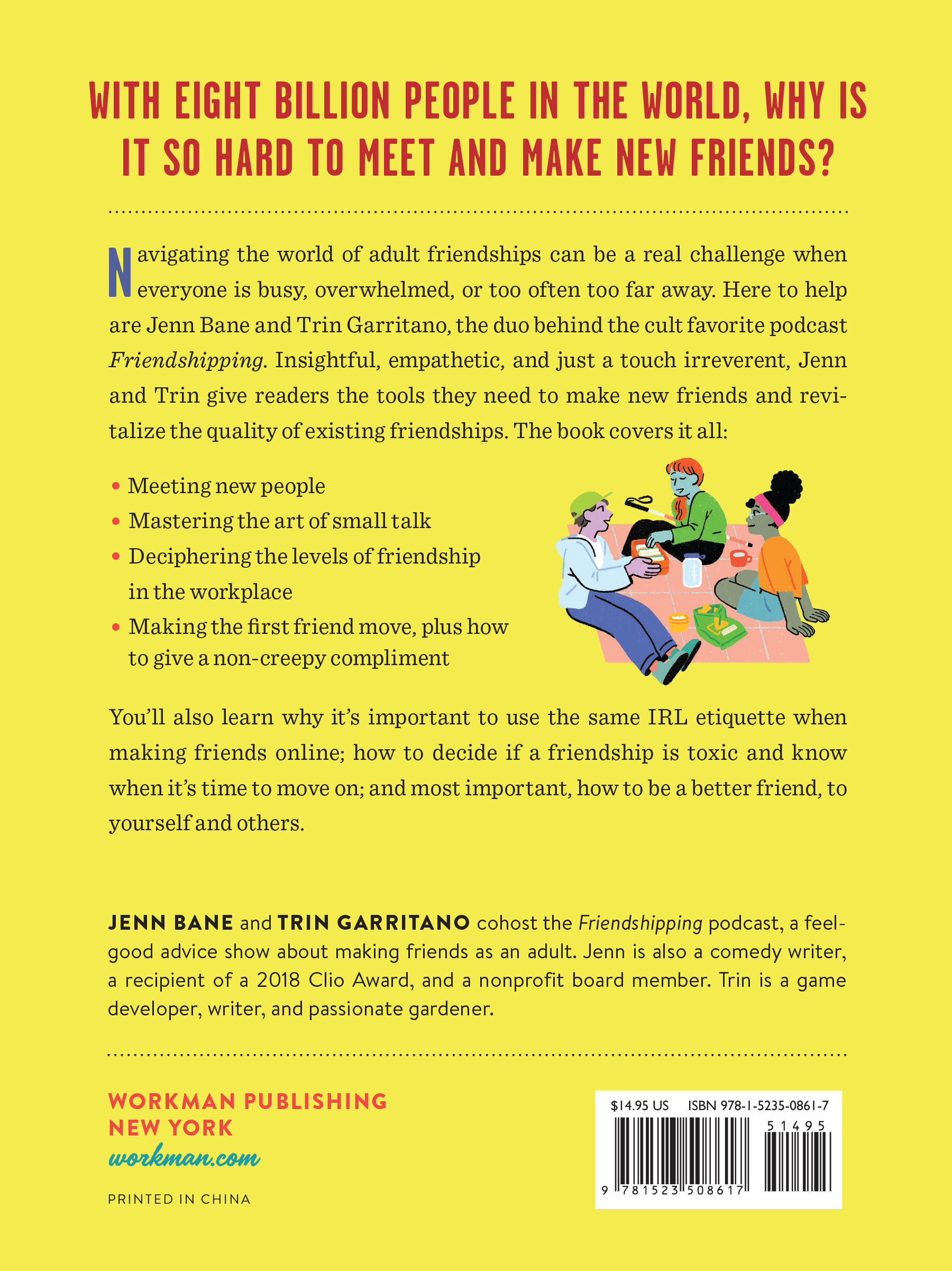Friendshipping
The Art of Finding Friends, Being Friends, and Keeping Friends
Contributors
By Jenn Bane
By Trin Garritano
Illustrated by Jean Wei
Formats and Prices
Price
$14.95Price
$19.95 CADFormat
Format:
- Trade Paperback $14.95 $19.95 CAD
- ebook $9.99 $12.99 CAD
- Audiobook Download (Unabridged) $24.99
This item is a preorder. Your payment method will be charged immediately, and the product is expected to ship on or around December 22, 2020. This date is subject to change due to shipping delays beyond our control.
Also available from:
With eight billion people in the world, why is it so hard to meet and make new friends?
Navigating the world of adult friendships can be a real challenge when everyone is busy, overwhelmed, or too often too far away. Here to help are Jenn Bane and Trin Garritano, the duo behind the cult favorite podcast Friendshipping. Insightful, empathetic, and just a touch irreverent, Jenn and Trin give readers the tools they need to make new friends and revitalize the quality of existing friendships. The book covers it all:
- Meeting new people
- Mastering the art of small talk
- Deciphering the levels of friendship in the workplace
- Making the first friend move, plus how to give a non-creepy compliment
You’ll also learn why it’s important to use the same IRL etiquette when making friends online; how to decide if a friendship is toxic and know when it’s time to move on; and most important, how to be a better friend, to yourself and others.
-
“A thoughtful, step-by-step guide to building a close relationship as a grown-up.” —Boston Globe
“The authors successfully translate the conversational, easygoing tone of the podcast in their upbeat admonitions to be proactive with friendships. Those looking to bring more intentionality and kindness to relationships will get much out of this.” —Publishers Weekly
2022 NAUTILUS BOOK AWARDS - Gold, Relationships and Communication
“Just like friendship itself, Friendshipping wraps you in a big hug and reminds you that you’re not alone. A must read for anyone who has friends or is a friend (aka everyone).” —Molly Dillon, compiler and coauthor of the New York Times bestseller Yes She Can: 10 Stories of Hope Change from Young Female Staffers of the Obama White House
“Whether you’re looking to enlarge your circle of intimates or cultivate more one-on-one connections this year, Bane and Garritano will help you develop habits and behaviors that will widen your world.” —BookPage
“Realistic, relatable, and really, really funny, Friendshipping taught me exactly how to create, nurture, and cherish the most important relationships in my life. Required reading for anyone socially awkward, shy, or introverted like me!” —Sam Maggs, bestselling author of Girl Squads: 20 Female Friendships That Changed History
“Whether you’re neck-deep in the pal-centric lifestyle or just looking to expand your social circle, this kind, thoughtful, and practical guide will help you both find—and be—a better friend.” —Ryan North, New York Times bestselling author of How to Invent Everything: A Survival Guide for the Stranded Time Traveler and Marvel’s The Unbeatable Squirrel Girl series -
“A thoughtful, step-by-step guide to building a close relationship as a grown-up.” —Boston Globe
“The authors successfully translate the conversational, easygoing tone of the podcast in their upbeat admonitions to be proactive with friendships. Those looking to bring more intentionality and kindness to relationships will get much out of this.” —Publishers Weekly
“Just like friendship itself, Friendshipping wraps you in a big hug and reminds you that you’re not alone. A must read for anyone who has friends or is a friend (aka everyone).” —Molly Dillon, compiler and coauthor of the New York Times bestseller Yes She Can: 10 Stories of Hope Change from Young Female Staffers of the Obama White House
“Whether you’re looking to enlarge your circle of intimates or cultivate more one-on-one connections this year, Bane and Garritano will help you develop habits and behaviors that will widen your world.” —BookPage
“Realistic, relatable, and really, really funny, Friendshipping taught me exactly how to create, nurture, and cherish the most important relationships in my life. Required reading for anyone socially awkward, shy, or introverted like me!” —Sam Maggs, bestselling author of Girl Squads: 20 Female Friendships That Changed History
“Whether you’re neck-deep in the pal-centric lifestyle or just looking to expand your social circle, this kind, thoughtful, and practical guide will help you both find—and be—a better friend.” —Ryan North, New York Times bestselling author of How to Invent Everything: A Survival Guide for the Stranded Time Traveler and Marvel’s The Unbeatable Squirrel Girl series
- On Sale
- Dec 22, 2020
- Page Count
- 224 pages
- Publisher
- Workman Publishing Company
- ISBN-13
- 9781523508617
Newsletter Signup
By clicking ‘Sign Up,’ I acknowledge that I have read and agree to Hachette Book Group’s Privacy Policy and Terms of Use
